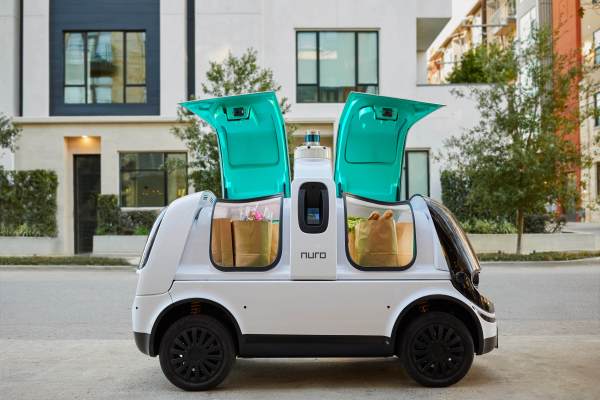Remember all the way back to December 2020. Where were you? What were your plans? What did you expect and hope the new year would bring? I suspect I’m not alone in feeling like I’ve spent much of the past year on a hamster wheel, with better days just over the horizon. Truth is, few of us reasonably expected the pandemic to stretch on for this long. And our expectations of “normal” have adjusted accordingly.
As we reflect on how the last year has played out for robotics — and the way things look, going forward — the pandemic is, once again, the primary force guiding practically every facet of the industry. As I mentioned last week, we’re going to spend these next few weeks wrapping up the year here on Actuator. This week, I want to talk about delivery robotics, a category that’s seen some of the biggest investment this past year.
But first, we’ll be asking some of the industry’s leading names to reflect on the year that was — and help us forecast how 2022 might look for robotics and automation.

Image Credits: CMU/Boston Dynamics
First up is Matthew Johnson-Roberson, who recently became the director of CMU’s Robotics’ Institute. Johnson-Roberson served as co-director for the University of Michigan’s Ford Center for Autonomous Vehicles and co-founder of Refraction AI — which is to say, it’s not surprising that he offers some insight into how things will look for the autonomous driving industry.
What was the defining robotics/AI/automation trend of 2021? I’m seeing increasing trends in application-specific AI companies (computer vision tasks, robotics devices to solve a problem, chat bots for x, etc.). Those seem poised to continue as the market looks for good fits for increasingly powerful algorithms.
What will 2022 bring for these categories? In the coming year, I expect more of the large self-driving companies to continue their consolidation and more to go public as they prepare to burn capital attempting to expand and serve customers.
This week we also spoke to Rob Playter, the longtime Boston Dynamics executive who was appointed CEO early last year.
What was the defining robotics/AI/automation trend of 2021? Legged robots coming of age. 2021 saw the introduction of multiple legged robots to the market. Quadrupeds are leaving the lab and entering the workplace, and the ongoing labor shortages plaguing many industries has only intensified the need. We’ve seen strong interest for Spot around industrial use cases where mobile robots can navigate worksites that include stairs, doors and other obstacles that would foil wheeled or tracked robots. Our customers are using Spot as a dynamic sensing platform to collect reliable, repeatable data around their sites for tasks like thermal anomaly detection in industrial manufacturing, radiation mapping in nuclear facilities and digital twin modeling on construction sites. Products like Spot are proving they can add real value in the real world.
What will 2022 bring for these categories? Operational adoption. In 2022 customers will begin deploying mobile robots like Spot at greater scale across their enterprises. We’ve seen tremendous uptake by industrial innovation teams exploring mobile robots for a wide variety of applications, and next year we expect to see customers integrating more robots into their asset management programs and day-to-day operations. But for industrial mobile robots to expand rapidly at enterprise scale, we also need to see greater reliability from the industry as a whole. We’ve seen a lot of products announced that are conceptual-only or that have only been deployed in small proof-of-concept exercises. As more and more businesses look to invest in real-world technology, the most reliable, robust and accessible products will prevail.
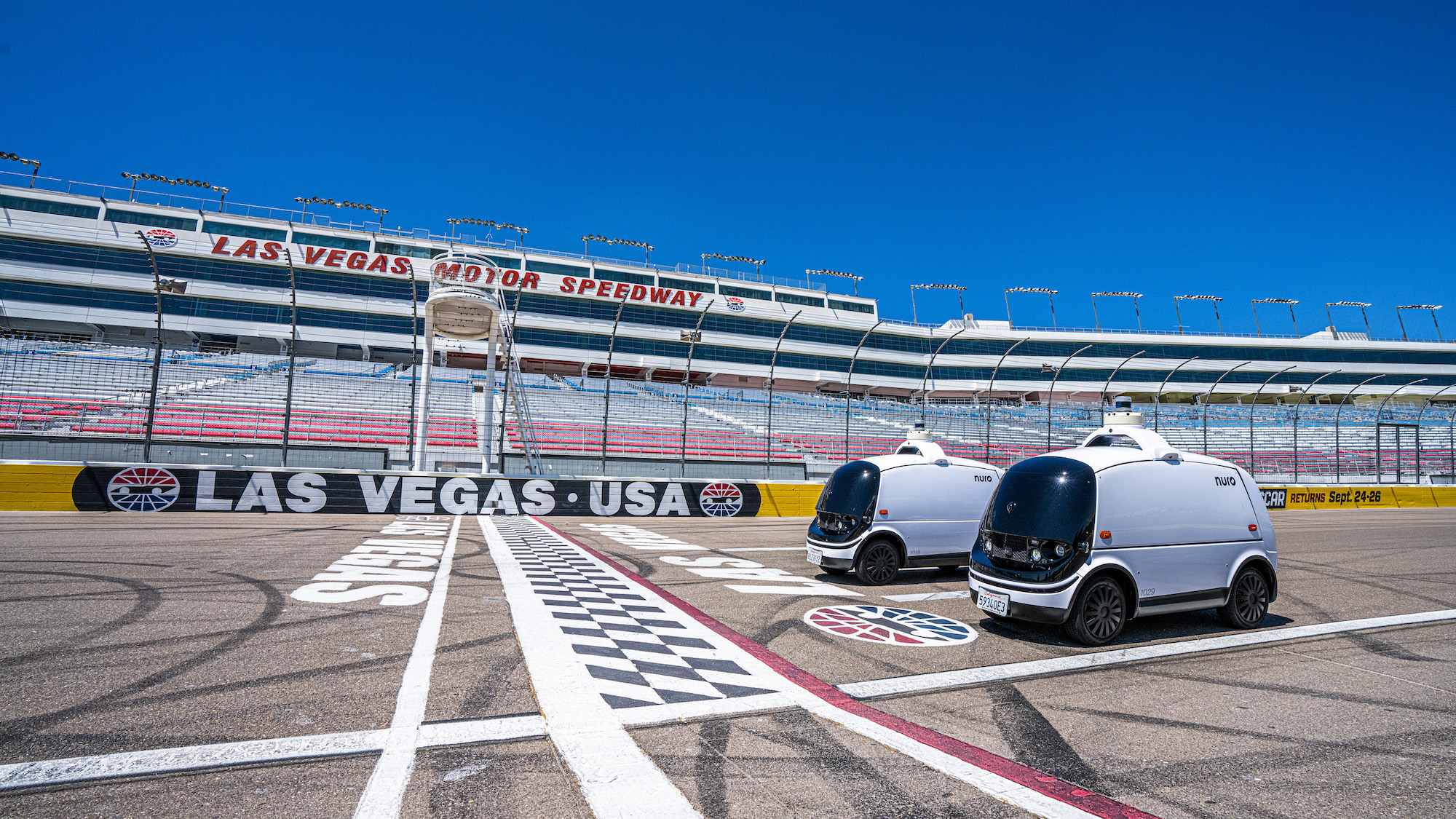
Image Credits: Nuro
Few segments of this industry gained more traction over these past two years than delivery. Prior to the pandemic, much of the conversation around autonomous delivery centered around regulation and questions of demand. After the first several months of the pandemic brought much of the world to a standstill, leaving many afraid to venture outside the safety of their own homes, delivery services like Seamless and Uber Eats saw a sharp uptick in usage.
While stay-at-home orders have loosened in much of the world throughout 2021, myriad issues have continued to plague industries, leaving sharp demand for automation. These include widespread staffing shortages for food service and other blue-collar jobs, as well as global supply chain and shipping issues. That is to say that delivery issues aren’t just a matter of last- or middle-mile — it’s every segment here.
For those reasons (for starters, at least), it’s unsurprising that so much of this has been met with a massive uptick in investments across the board. As with so much of robotics, problems analysts expected companies would be tackling five or 10 years down the road are suddenly impossible to ignore.
Nuro led the way with one of the biggest robotics raises in recent memory, led by (who else?) Tiger Global. The $600 million Series D, announced early last month, increased the company’s valuation north of 70%, to $8.6 billion. Integral to the deal is a new partnership with Google Cloud, which finds both parties pushing the service toward commercialization, as they “explore opportunities together to strengthen and transform local commerce.”
If you’ve spent any time near college campuses, there’s a decent chance you’ve seen delivery robots like Kiwibot out in the world. And while funding — and, in Nuro’s case, production — is ramping up, you’re almost certainly getting a majority of packages delivered to you by human beings at this point.
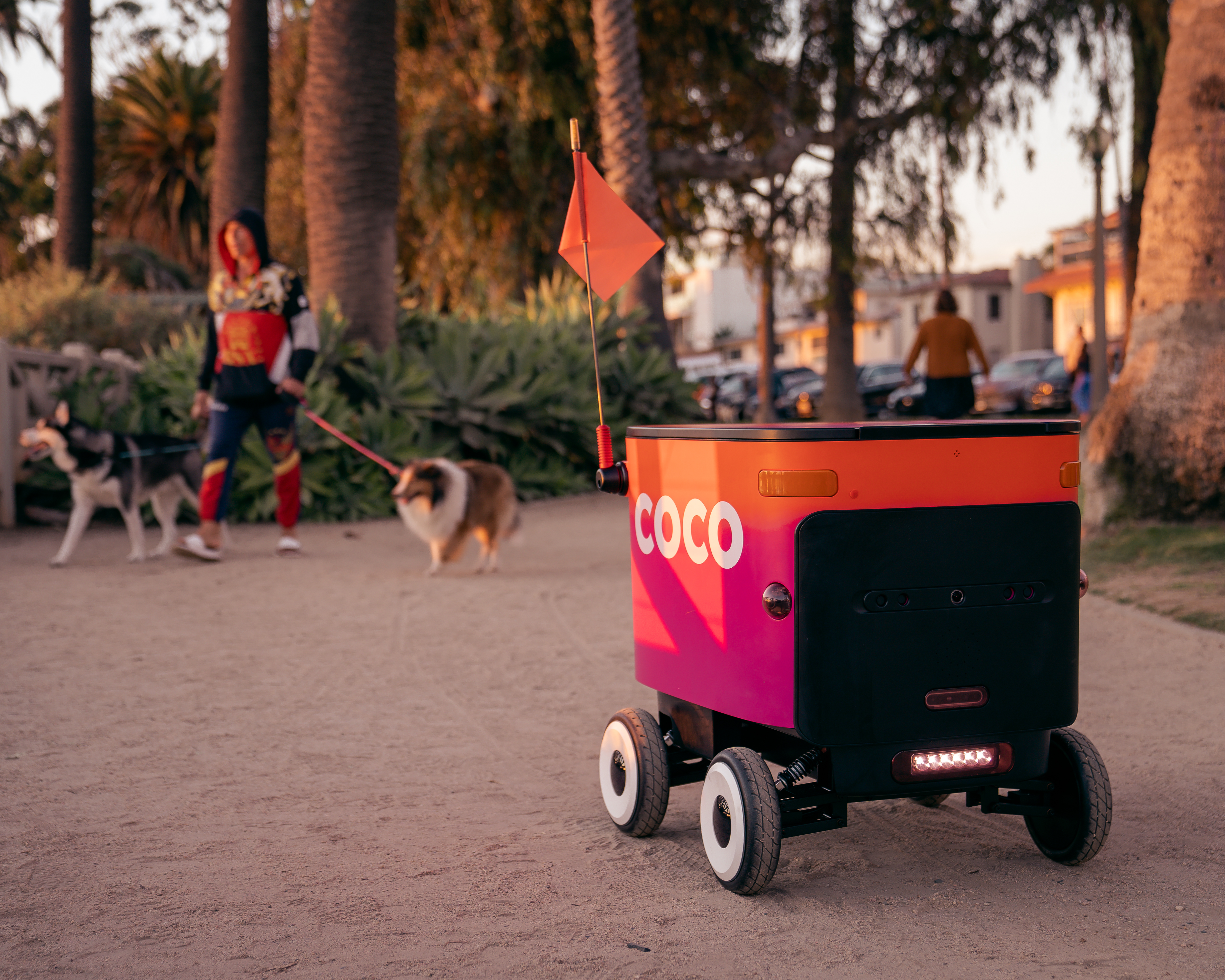
Image Credits: Coco
Speaking of campuses, UCLA spinout Coco saw a decent size round early this year with a $36 million raise, bringing the company’s funding up to $43 million. Co-founder and CEO Zach Rash insisted that the time is now for such delivery technologies, noting in a release, “I strongly believe the delivery service industry in its current state is massively under-serving merchants. We have an enormous opportunity to create a better experience for hundreds of thousands of merchants and their customers, today. This is not a research program experimenting with technology to be productized at some unknown point in the future.”
The firm, formerly known as Cyan Robotics, doesn’t have a high-profile partner like Nuro’s Domino’s deal, thought it does list 18 partners, largely in the Los Angeles area. It’s currently operating deliveries in Santa Monica and five other LA areas. So, while it’s true that robotic deliveries are currently more the exception than the rule, if you order food in the right place at the right time, it just might be a robot on the other end.
This week, the company also announced a manufacturing deal with Segway. The latter’s VP of global business development, Tony Ho, tells TechCrunch:
This is just the beginning of our partnership. We will stay on the product side of things, and Coco will be the operators. So it’s a bit similar to the micromobility space where we provide the vehicles and hardware and they provide the relationship with the city and the staff and the whole operation behind it. Right now, we’re seeing this almost like it was with scooters in 2017, where the whole industry is booming. It’s a land grab.
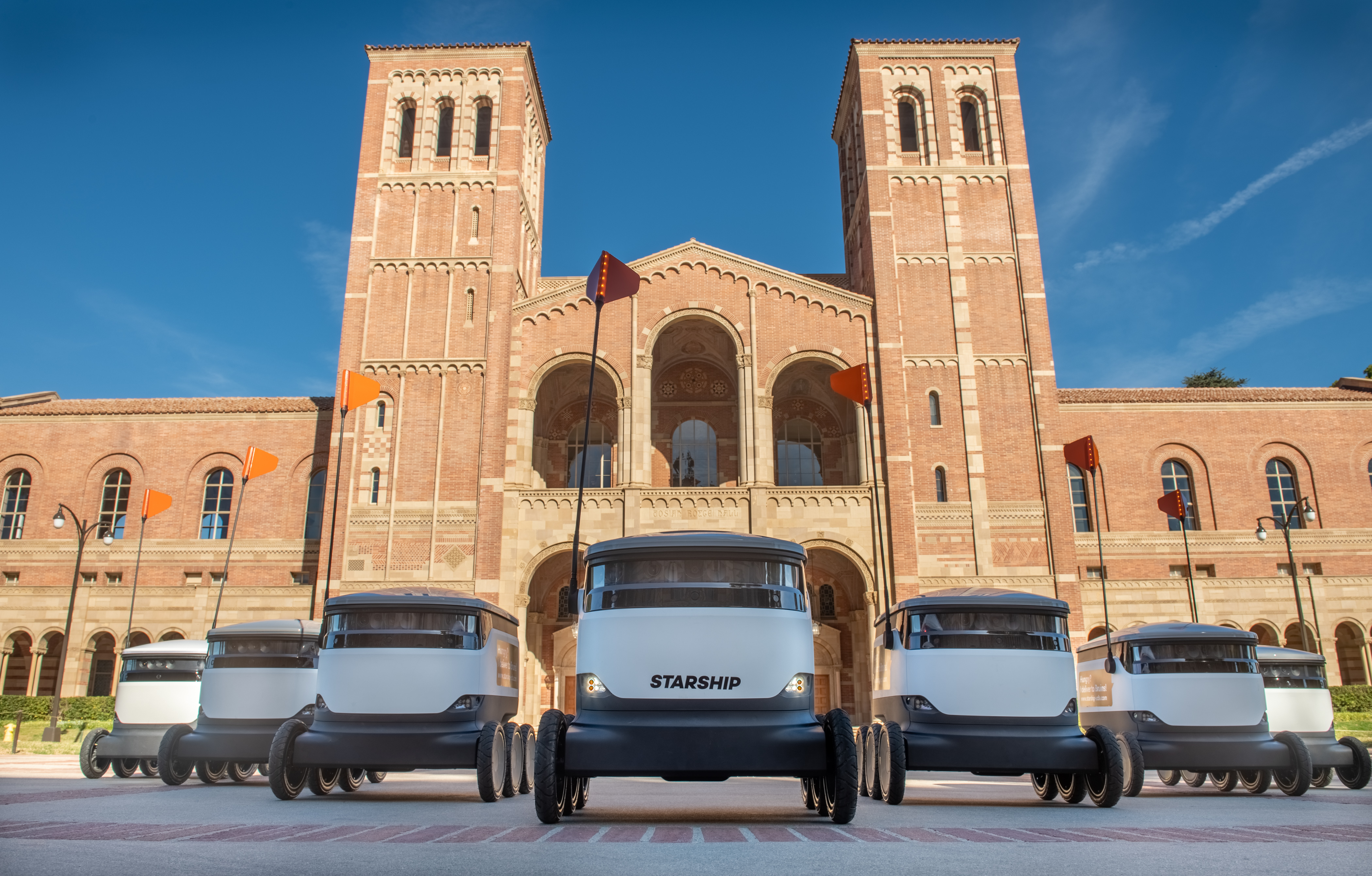
Starship delivery robots at UCLA campus on January 15th, 2021. Image Credits: Starship/Copyright Don Liebig/ASUCLA
Starship, meanwhile, kicked off the year with a healthy $17 million raise. The company is among those robotic delivery services focused on getting food to campuses, announcing plans to expand from 15 universities to 100.
Autonomous trucking had a great year, as well, citing similar concerns around staffing shortages. Kodiak Robotics raised a $125 million Series B, with plans to double its headcount, while Swedish firm Einride drummed up $110 million, with plans to expand into the U.S.
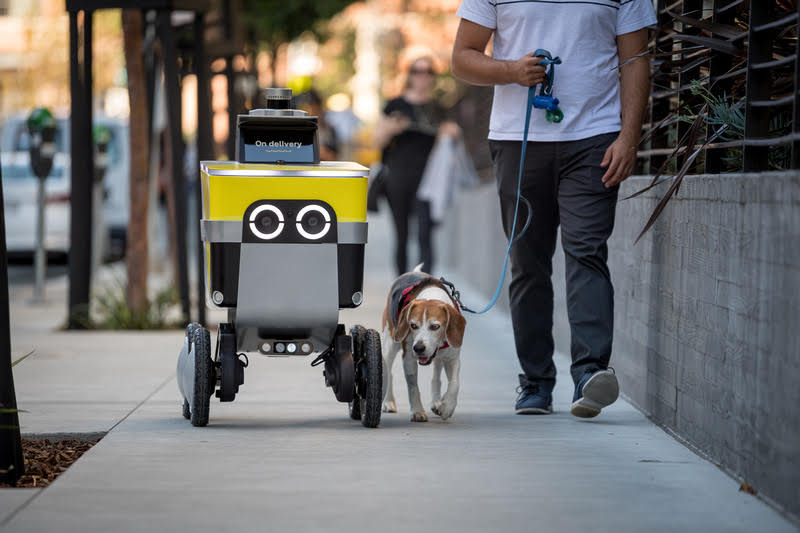
Image Credits: Serve Robotics
And as we transition into the robotics news of the week, here’s yet another delivery raise. The $13 million Series A comes courtesy of Serve Robotics, which spun out from Uber’s Postmates earlier this year. “Our goal is to put robots in every major U.S. city in the next two to three years,” co-founder Ali Kashani said of the company’s grand ambitions.
7-Eleven’s investment wing, 7-Ventures, was involved in the round. The convenience store giant is especially bullish about robotics deliveries these days, having piloted with Nuro, among others. Delivery Hero, which also participated in the round, has worked with Starship previously.

Image Credits: Petra
Next, we move underground, as Petra emerges from stealth to announce a $30 million Series A. The company uses thermal technology to bore tunnels into some of the strongest rock on Earth. To demonstrate this feat, the startup also announced that its robot, Swifty, successfully bored a 20-foot tunnel through Sioux Quartzite at a rate of one-inch-per-minute.
Co-founder and CEO Kim Abrams says:
We’ve invented a completely new way to excavate rock and this will have profound implications on the future of tunneling. By delivering a boring solution that affordably undergrounds utilities through high-grade rock, we can finally protect communities from exposure to wildfires and ensure the safety of critical infrastructure in disaster-prone areas, especially in places like the Sierra Nevada mountains, Rocky Mountains, and coastal regions.

Image Credits: MIT CSAIL
A fun bit of research from MIT CSAIL to close us out this week. The lab unveiled “Evolution Gym,” a testing simulator for soft robotic designs. It’s still a simulation, of course, but it offers some interesting insights into how compliant robots can adapt to different environmental challenges.
CSAIL notes, “The result looks like a little robot Olympics. In addition to standard tasks like walking and jumping, the researchers also included some unique tasks, like climbing, flipping, balancing, and stair-climbing.”

Image Credits: Bryce Durbin/TechCrunch
Actuator is now a newsletter! Sign up here to get it delivered to your inbox.
Credit: Source link


